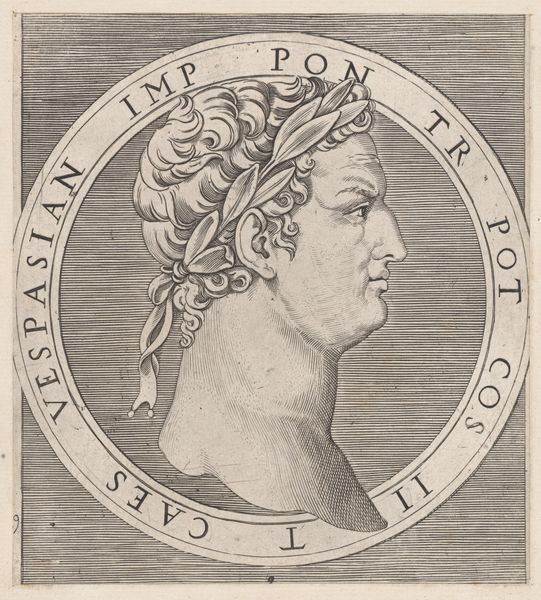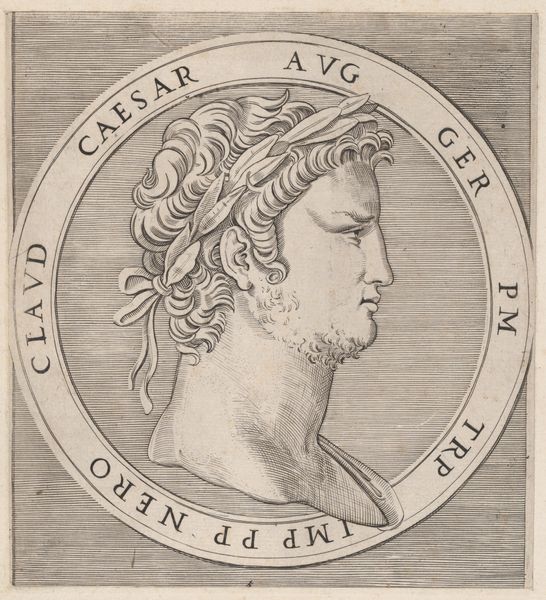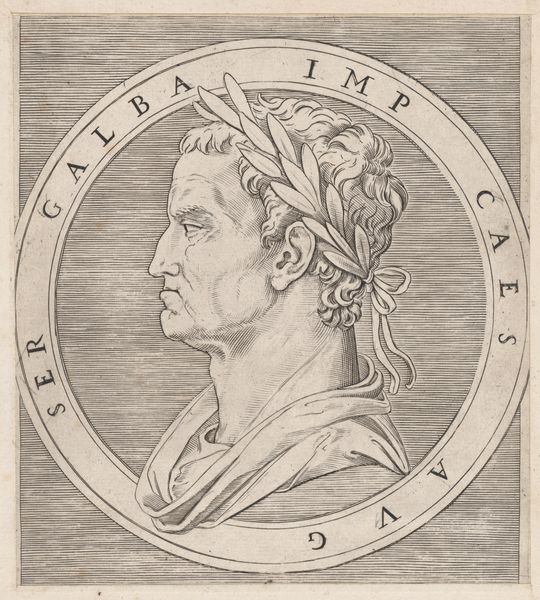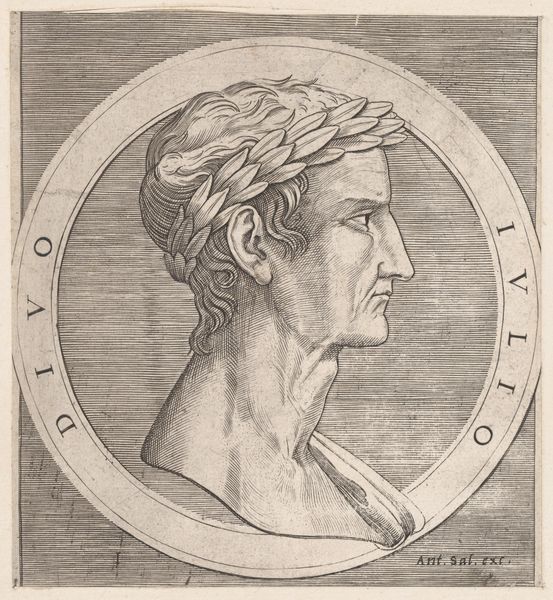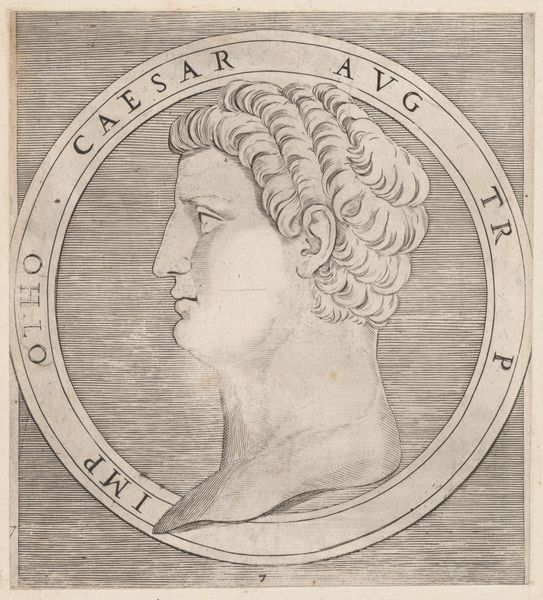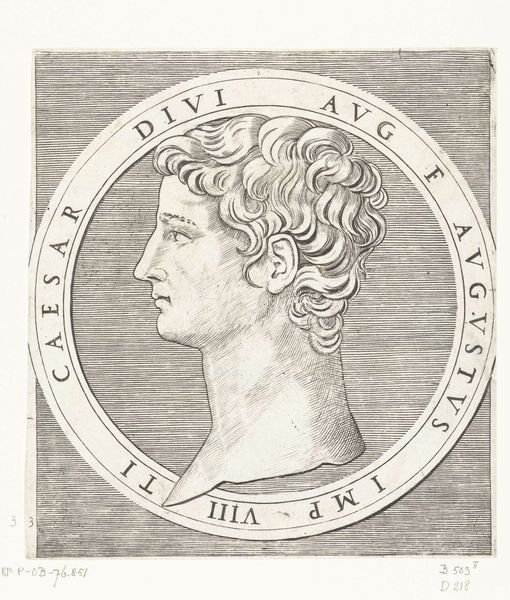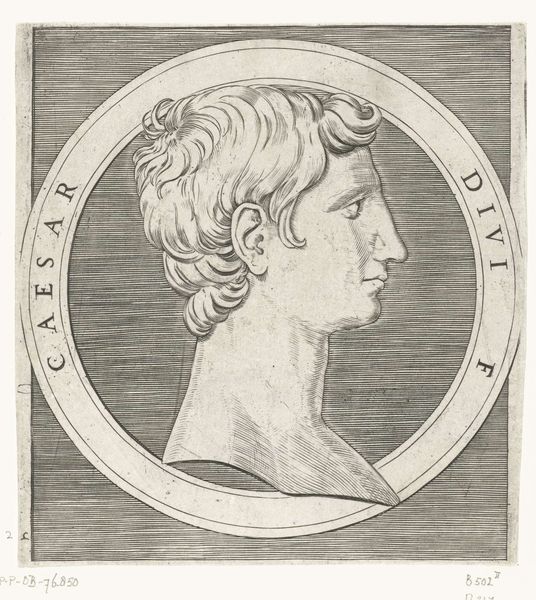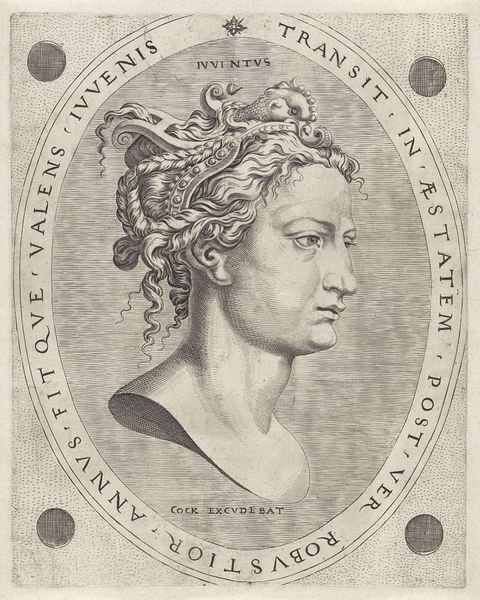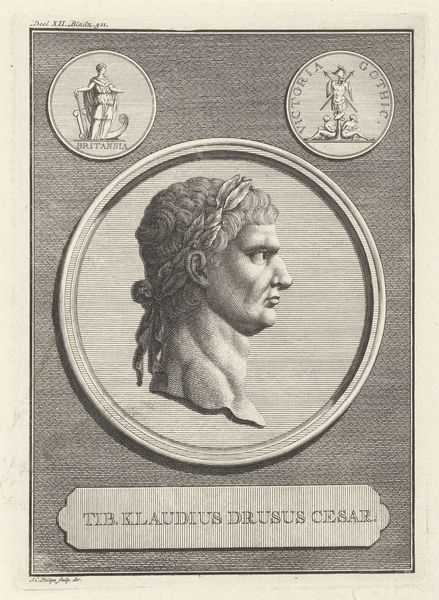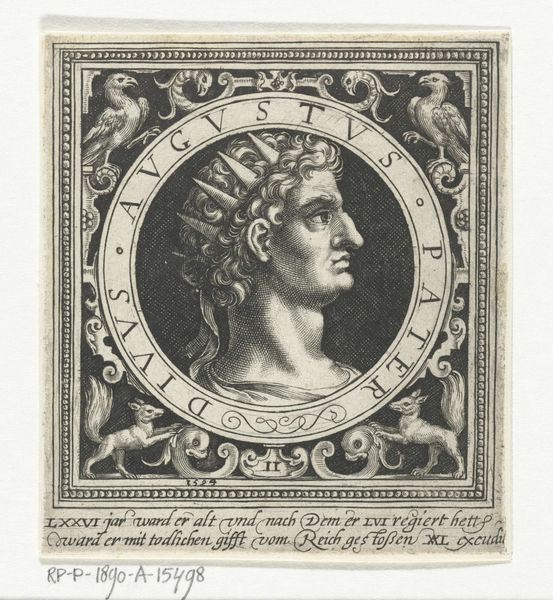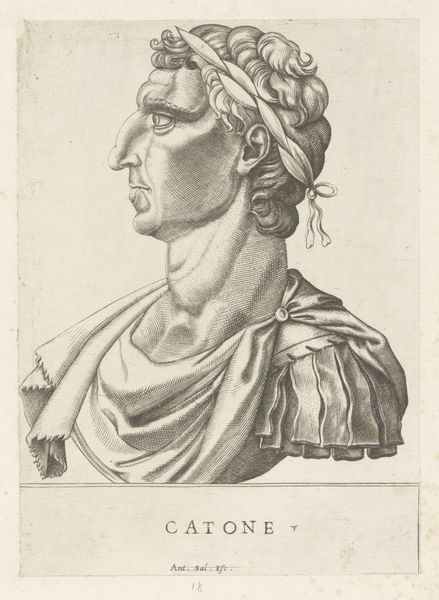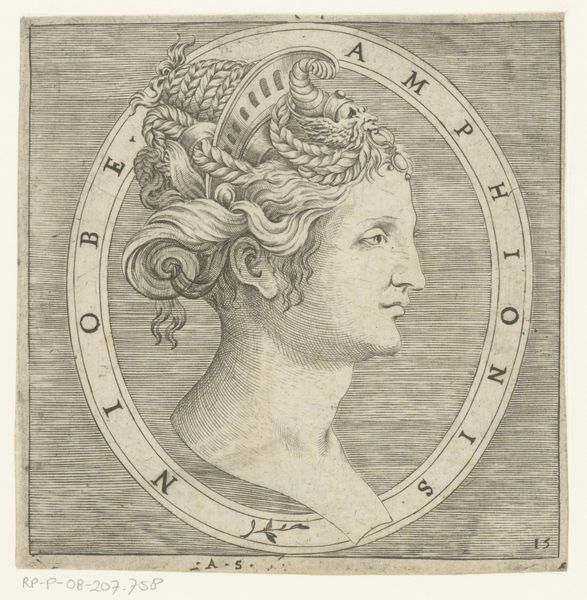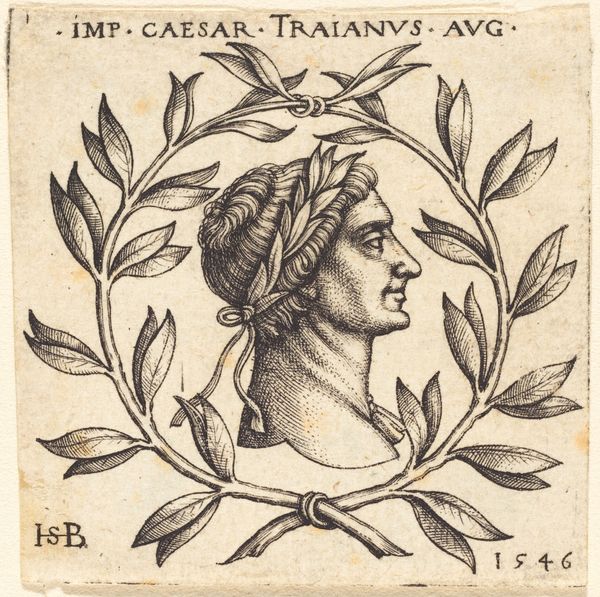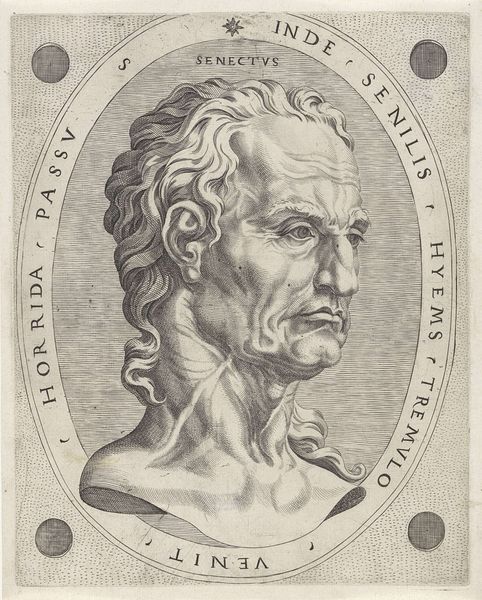
Speculum Romanae Magnificentiae: Nerva, from "The Twelve Caesars" 1495 - 1539
0:00
0:00
drawing, print, engraving
#
portrait
#
drawing
#
aged paper
#
toned paper
# print
#
old engraving style
#
caricature
#
11_renaissance
#
ancient-mediterranean
#
men
#
portrait drawing
#
history-painting
#
italian-renaissance
#
engraving
#
profile
Dimensions: mount: 11 1/4 x 16 3/4 in. (28.5 x 42.6 cm) sheet: 6 5/8 x 5 7/8 in. (16.8 x 15 cm)
Copyright: Public Domain
Editor: This engraving, titled *Speculum Romanae Magnificentiae: Nerva, from "The Twelve Caesars,"* by Marcantonio Raimondi, was created sometime between 1495 and 1539. The detail achieved with just lines and a toned paper background is astonishing. What's particularly interesting about this portrait in profile? Curator: What stands out is not merely the detail, but Raimondi's conscious effort to construct an image rooted in power and historical continuity. The series title, "The Twelve Caesars", signals an ambition to visually link the present – Renaissance Italy – with the grandeur of the Roman Empire. How do you see that political claim functioning within the context of its time? Editor: I guess creating this series emphasizes Rome's historical importance to assert the cultural supremacy of the Italian Renaissance. Like, "we are the new Rome". It feels...almost like propaganda. Curator: Precisely. It's important to remember that the "Speculum Romanae Magnificentiae" wasn't just about showcasing historical accuracy; it was also about fashioning a visual language of authority. The portrait style itself—the profile, the laurel wreath—all borrow directly from Roman coinage and sculpture. It creates a powerful symbolic link, asserting a kind of inherited right to rule, culturally and politically. Editor: So, it's less about historical representation, and more about contemporary aspirations using the visual vocabulary of the past. Did audiences at the time recognize these visual cues? Curator: Absolutely. They were well-versed in classical imagery. Raimondi and his contemporaries knew exactly what they were doing. The power of this image resides in its carefully constructed claim to legitimacy within the very specific context of Renaissance Italy. What did you learn? Editor: I learned that Renaissance artists leveraged historical imagery for present-day political messaging and constructing power. Curator: Precisely. These portraits tell a complex story about power, memory, and the active construction of history.
Comments
No comments
Be the first to comment and join the conversation on the ultimate creative platform.
